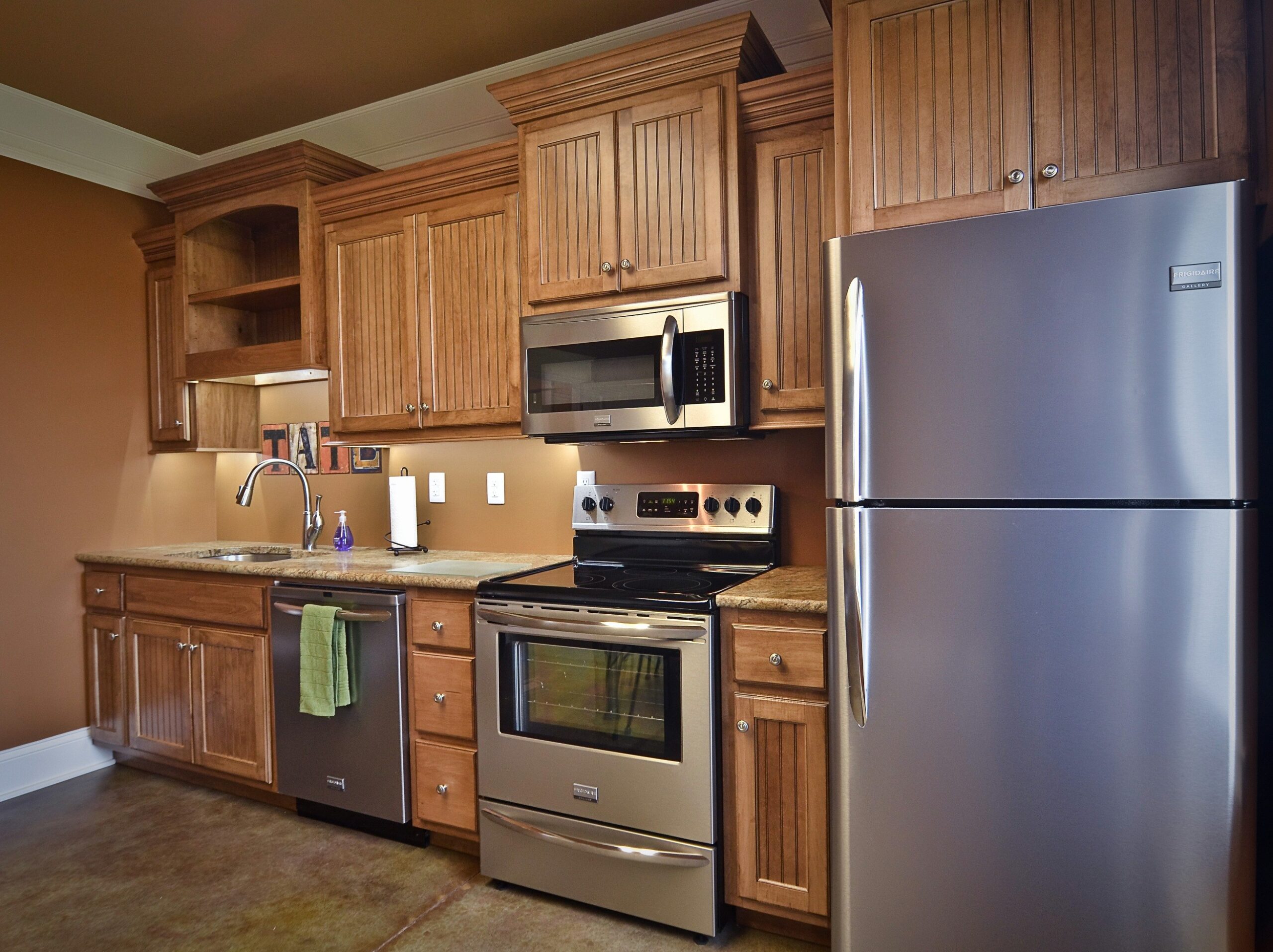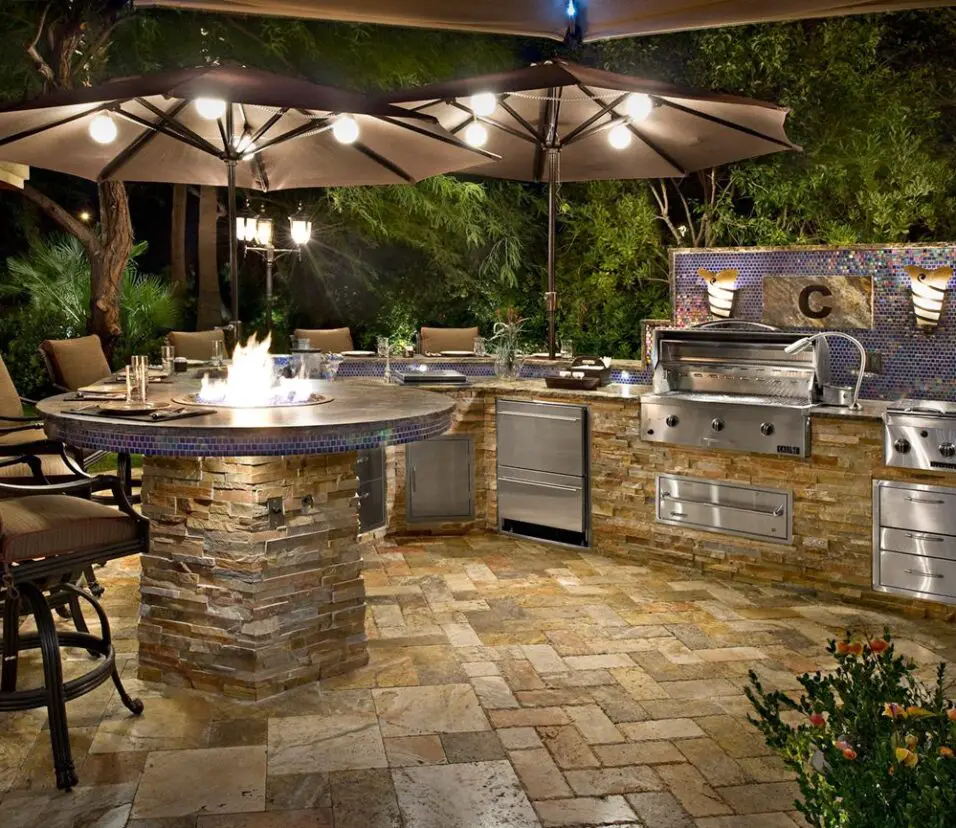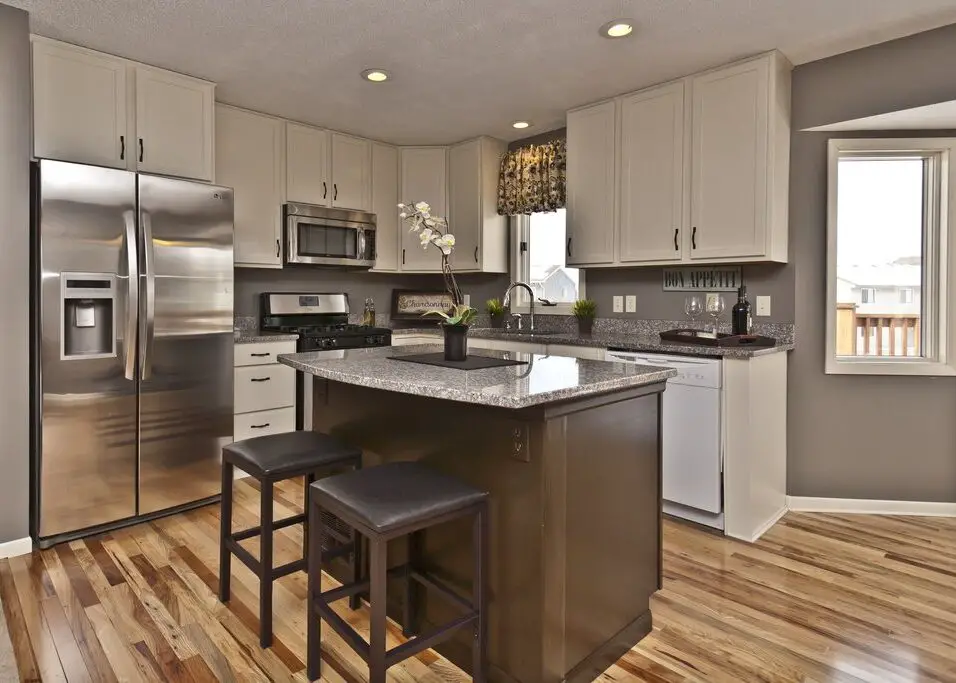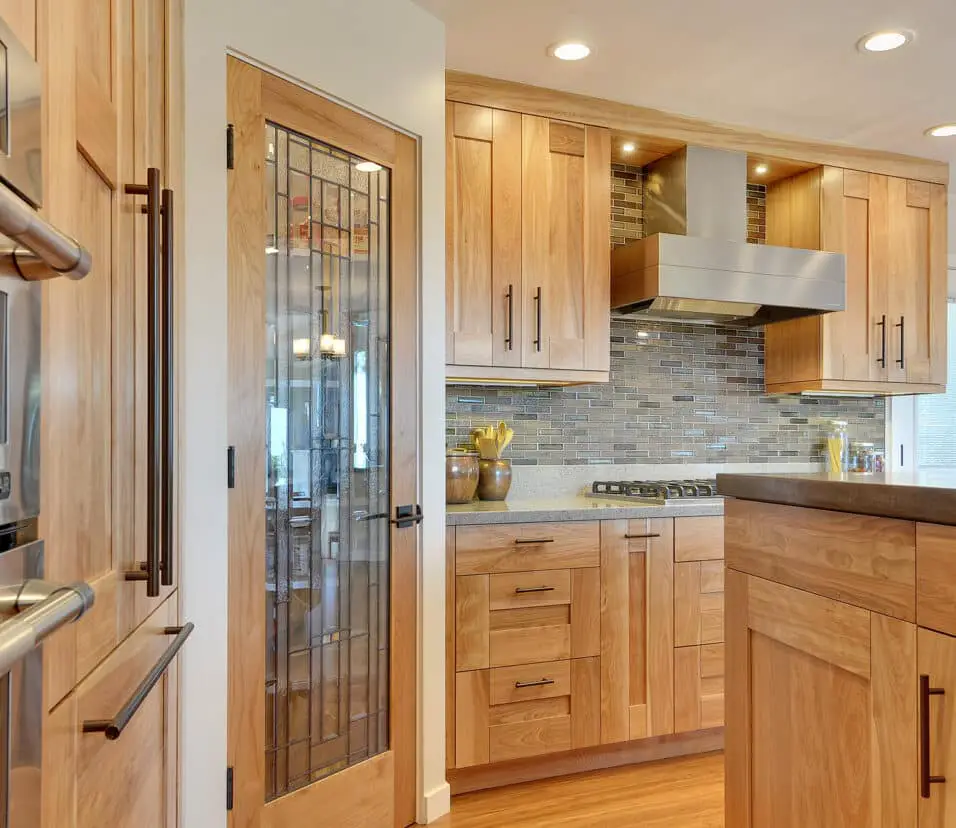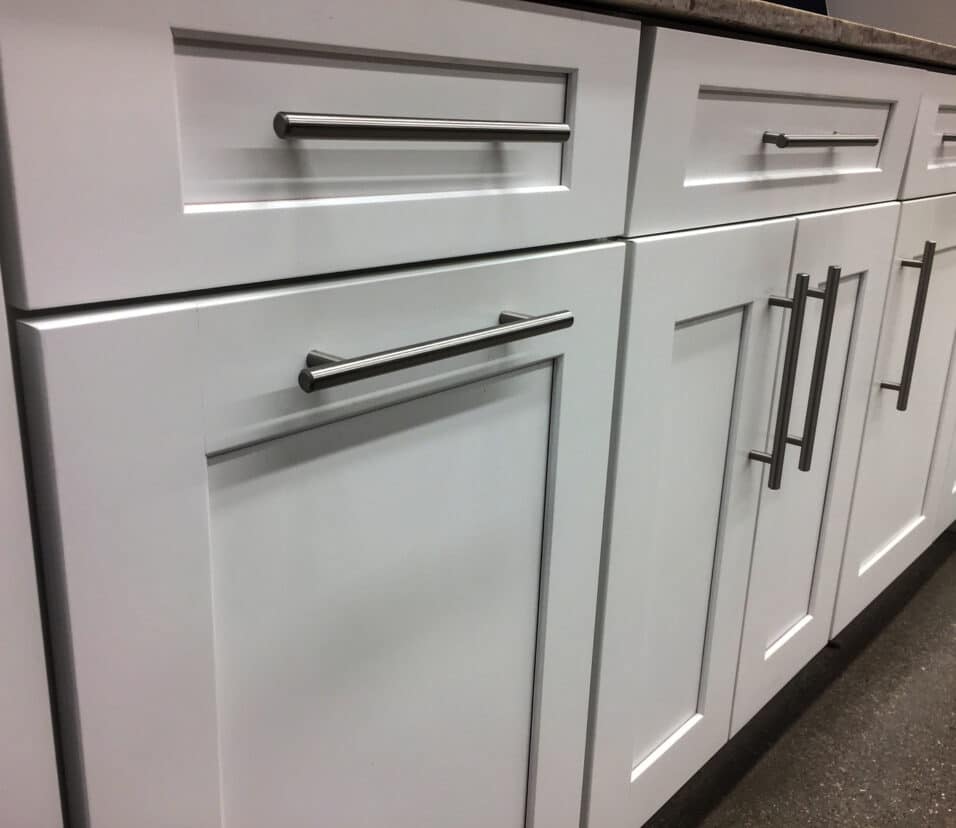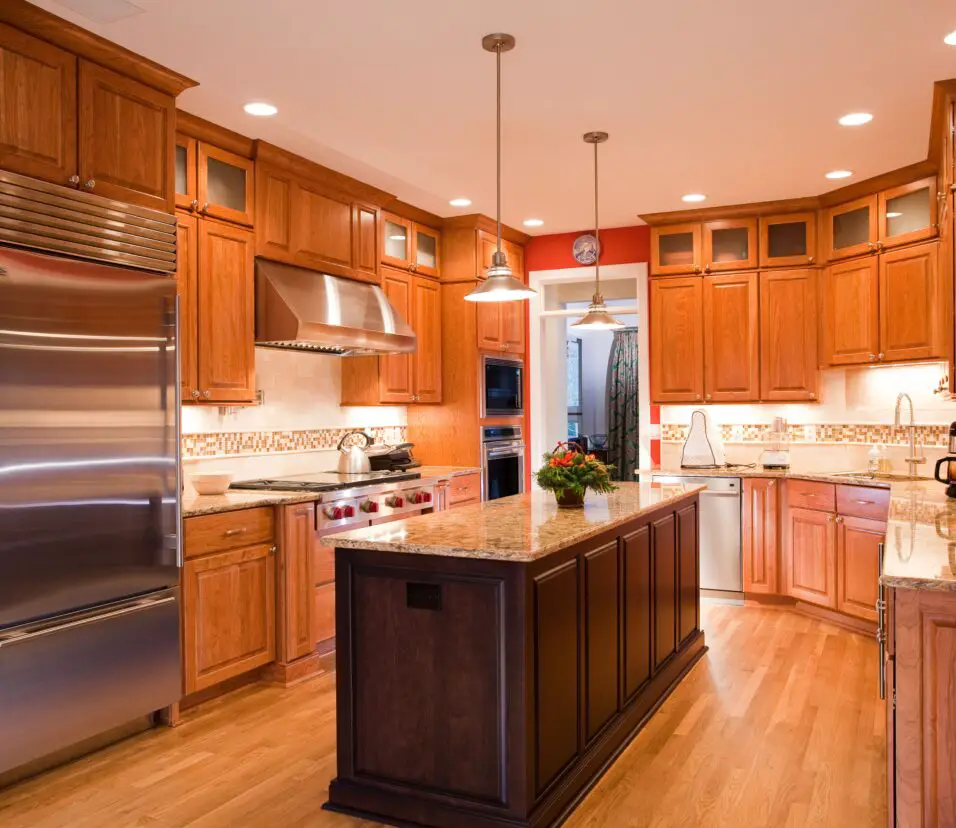How To Stain A Kitchen Cabinet
Introduction
How To Stain A Kitchen Cabinet: Begin by carefully examining your kitchen cabinets to identify any existing damage, scratches, or imperfections. Make necessary repairs, fill in gaps, and sand down rough areas to ensure a smooth and even surface for staining. Remove all cabinet doors, drawers, and hardware to facilitate easier access during the staining process. Thoroughly clean the cabinet surfaces, removing any grease, grime, or residue. A mixture of mild dish soap and water or a gentle degreaser can be used for this purpose.
Sanding is a crucial step in the staining process, as it helps to open the wood’s pores and ensures better stain absorption. Use medium-grit sandpaper to sand all cabinet surfaces, following the grain of the wood. Follow up with fine-grit sandpaper to achieve a smoother finish, eliminating any visible scratches or rough spots. After sanding, wipe down the kitchen cabinets with a tack cloth or a lint-free cloth to remove any sanding dust. Choose a wood stain color that complements your kitchen’s overall decor and matches your vision. Test a small area or an inconspicuous spot on the cabinet to ensure the chosen stain color meets your expectations.
Before applying the stain, stir it well to ensure an even color distribution. Apply the stain with a brush, sponge, or cloth, following the direction of the wood grain. If you desire a darker color, repeat the staining process after allowing the first coat to dry completely.

Can you stain existing kitchen cabinets?
Luckily, you don’t have to tear out the old cabinets and replace them. Before diving into the staining process, carefully evaluate your existing kitchen cabinets. Check for any damages, scratches, or areas of unevenness that may require repair. Ensure that the cabinets are structurally sound and free of any moisture issues.
Proper preparation is crucial for a successful staining project. Start by removing all cabinet doors, drawers, and hardware. This will allow you to work more efficiently and achieve an even finish. Clean the surfaces thoroughly to remove any grease, grime, or residue. A mixture of mild dish soap and water or a gentle degreaser should suffice.
Use medium-grit sandpaper to sand all cabinet surfaces, following the grain of the wood. This will create a smooth and consistent base for the stain. Follow up with fine-grit sandpaper to achieve an even smoother finish, removing any visible scratches or rough spots.
Choosing the right stain color is a vital decision that will greatly impact the overall aesthetics of your kitchen. Consider the existing decor and color scheme to find a stain that complements the space.
What kind of stain do you use on kitchen cabinets?
Water-based stain
What kind of stain do you use on cabinets? The easiest product for staining cabinets is a water-based stain, but oil-based stains and varnishes are also used frequently. However, oil-based stains have a strong odor that some people don’t like and take longer to dry than water-based stains.
Oil-based stains are popular for kitchen cabinets due to their rich and deep color penetration. Oil-based stains offer a wide range of colors and provide excellent durability, making them suitable for high-traffic areas like kitchens. However, they require more time to dry and can emit strong fumes, necessitating proper ventilation during application.
Water-based stains are an eco-friendly alternative to oil-based stains. They contain water as the primary solvent, which results in fewer fumes and a quicker drying time. Water-based stains are available in various color options and provide good color clarity, highlighting the wood’s natural beauty.
Gel stains are a popular choice for kitchen cabinets because they offer greater control during application. These stains have a thick, gel-like consistency, which prevents drips and provides even coverage. They are easy to work with, especially for beginners, and can be used on both vertical and horizontal surfaces.
Hybrid stains combine the benefits of oil-based and water-based stains. They contain a blend of oil and water, allowing for better color penetration and faster drying time. Hybrid stains offer a range of colors and finishes, and their ease of use makes them an excellent choice for DIY projects. Additionally, they emit fewer fumes compared to pure oil-based stains, providing a more comfortable application process.
Can you stain over kitchen cabinets without sanding?
Try using a gel stain on those dated orange-yellow honey oak cabinets to give your kitchen a new look. There are a lot of good reasons to gel stain cabinets when you want to refresh the color of wood cabinetry. It’s an easy way to give your kitchen or bathroom a new look without sanding or stripping.
The success of staining without sanding largely depends on the type and condition of the existing finish on the cabinets. Staining over such finishes without proper preparation may result in a blotchy, streaky appearance.
When staining over an existing finish, it’s essential to consider how the new stain color will interact with the old finish. The final color might differ from your expectations or the color shown on the stain label due to the combination of the two finishes. Additionally, the sheen level might not be consistent throughout the cabinets, affecting the overall appearance.
Before attempting to stain over existing finishes, thorough cleaning and degreasing are essential to remove any contaminants that may hinder the stain’s adherence. However, even with proper cleaning, the results may not be as satisfactory as staining on a freshly sanded surface.
Is it better to paint or stain cabinets?
When it comes to durability, there is a bit of a tradeoff between painted and stained finishes. Painted cabinets are more resistant to damage because the paint layer adds some protection from dings and scratches. However, stained cabinets are better at concealing the damage done to them than painted cabinets.
Painting offers a vast array of color options, allowing you to match or complement your kitchen’s decor and achieve any desired aesthetic, from classic white to bold and vibrant hues.
If your cabinets have visible imperfections, such as scratches, dents, or mismatched wood, painting can effectively hide these blemishes and create a uniform appearance.
Painted cabinets are relatively easy to clean with regular household cleaning products, making maintenance hassle-free.
Painting cabinets can give your kitchen a modern and fresh appearance, particularly when using trendy colors or incorporating contrasting cabinet colors. The paint creates a protective layer that shields the wood from moisture and wear, offering good durability over time.
Properly preparing the cabinets, including thorough cleaning, sanding, and applying primer, is essential for achieving a smooth and long-lasting painted finish. Painted cabinets may require occasional touch-ups or repainting over time to maintain their appearance.
Staining brings out the natural grain and beauty of the wood, creating a warm and inviting look that showcases the cabinet’s material. Stained cabinets often have a timeless appeal, providing a classic and sophisticated touch to any kitchen design. Stained cabinets typically require less maintenance than painted ones, as they don’t show wear and tear as prominently and can be easily refreshed with a new coat of stain as needed.
Is staining cabinets better than painting?
Stain strikes a good balance between color and texture. This is a definitive plus for many homeowners. Unlike paint, stain doesn’t steal the spotlight from your wood’s natural character. Since it’s thinner than paint, it seeps into the surface, which can enhance the natural beauty of your wood.
Highlighting Natural Beauty: Staining cabinets allows the natural grain and texture of the wood to shine through. This creates a warm and inviting look that adds character and elegance to your kitchen.
Timeless Appeal: Stained cabinets often have a classic and timeless appeal.
Less Maintenance: Stained cabinets generally require less maintenance than painted ones. Because the stain soaks into the wood, it is less prone to chipping or peeling compared to paint.
Natural Color Options: Stains come in various shades, allowing you to choose from light to dark colors, or even opt for a clear coat to showcase the wood’s natural color. This flexibility in color options enables you to find the perfect tone to complement your kitchen’s design.
Eco-Friendly Choice: Stains are often considered more eco-friendly than certain types of paints, as they tend to have fewer harmful fumes and chemicals. This can be an essential consideration for those seeking greener options for their home improvement projects.
How hard is it to stain cabinets?
Staining is a great way to get a fresh, new, real-wood look to your kitchen cabinets you just can’t get with paint. It’s easy and convenient and almost fool-proof as a DIY project. All it takes is a little elbow grease and you’ll have a whole new look for your kitchen.
If you have previous experience with woodworking or staining projects, staining cabinets may come more naturally to you. Familiarity with sanding, staining techniques, and working with wood will make the process smoother. However, even beginners can successfully stain cabinets with careful research and a willingness to learn.
Proper preparation is critical to achieving a successful staining outcome. This includes thorough cleaning, sanding, and ensuring the cabinets are free from any existing finishes or blemishes that could affect the stain’s adhesion and appearance. Preparing the cabinets may require time and effort, especially if they have intricate designs or multiple surfaces to cover.
The type of wood used for the cabinets can impact the staining process. Different woods absorb stains differently, so understanding the characteristics of your particular wood species and adjusting your staining technique accordingly is essential to achieve an even and consistent finish.
Choosing the right stain color is an important decision that can influence the overall appearance of your cabinets. Testing the stain on a small, inconspicuous area before applying it to the entire cabinet will help you determine if the color matches your vision.
Applying the stain requires a steady hand and attention to detail. Whether you use a brush, cloth, or sponge, applying the stain evenly and in the direction of the wood grain is crucial to achieving a professional finish.
What is the best finish for stained kitchen cabinets?
Polyurethane
Finish stained cabinets with a clear coat of paint or a polyurethane topcoat for extra protection or to change the final appearance and make it glossier or more matte.
Polyurethane is a popular choice for finishing stained kitchen cabinets due to its excellent durability and water resistance. It creates a tough protective layer that guards against scratches, stains, and moisture, making it ideal for high-traffic areas like the kitchen. Polyurethane finishes come in various sheen levels, including matte, satin, semi-gloss, and gloss, allowing you to choose the level of shine that suits your preferences. While it can be slightly more challenging to apply than other finishes, polyurethane provides a beautiful, long-lasting result.
Varnish is another robust and long-lasting finish option for stained kitchen cabinets. It offers similar benefits to polyurethane, providing protection against wear and tear, moisture, and household chemicals. Varnishes are available in different formulations, including oil-based and water-based varieties, with varying sheen levels. Oil-based varnishes typically produce a warmer tone and slightly amber hue, while water-based varnishes tend to dry clear and are less likely to yellow over time.
Lacquer is a quick-drying and durable finish that forms a hard, smooth surface on stained cabinets. It offers excellent resistance to scratches, stains, and household chemicals. Lacquer finishes are available in various sheen levels, from matte to high-gloss, providing flexibility to match your desired look. However, lacquer can be more challenging to apply, often requiring specialized equipment and proper ventilation due to its strong fumes.
What is the trend in kitchen cabinet stain?
Amber toned wood in pine, oak and maple are the new trend for stained kitchen cabinets. The MIX of wood tones and solid colors is the most important kitchen design trend in 2023. Warmer wood tones will be the forward trend to watch, as they are paired with dark moody hues and pops of bright jewel tones.
One significant trend in kitchen cabinet stain was the preference for natural and light stains. Homeowners were gravitating towards stains that allowed the natural beauty of the wood to shine through. Lighter stains, such as natural oak or walnut, gave kitchens a warm and inviting feel, complementing various design styles, from traditional to modern farmhouse.
Mixing stains to create a two-tone effect was gaining popularity as a way to add visual interest and dimension to kitchen cabinets. This trend involved staining the upper cabinets in a lighter shade while using a darker stain for the lower cabinets or an accent feature. The result was a captivating and personalized look that added depth to the overall kitchen design.
In addition to stain color, the finish of the stain was also a focus of trends. Matte finishes were gaining traction as they offered a subtle, sophisticated look with less shine than traditional glossy finishes. Matte stains provided a smooth and modern appearance while reducing the visibility of fingerprints and smudges on cabinet surfaces.
For those seeking a dramatic and luxurious look, dark stains like espresso and black were popular choices. These rich and deep hues added a sense of elegance and sophistication to the kitchen while creating a striking contrast with light-colored countertops and backsplashes.
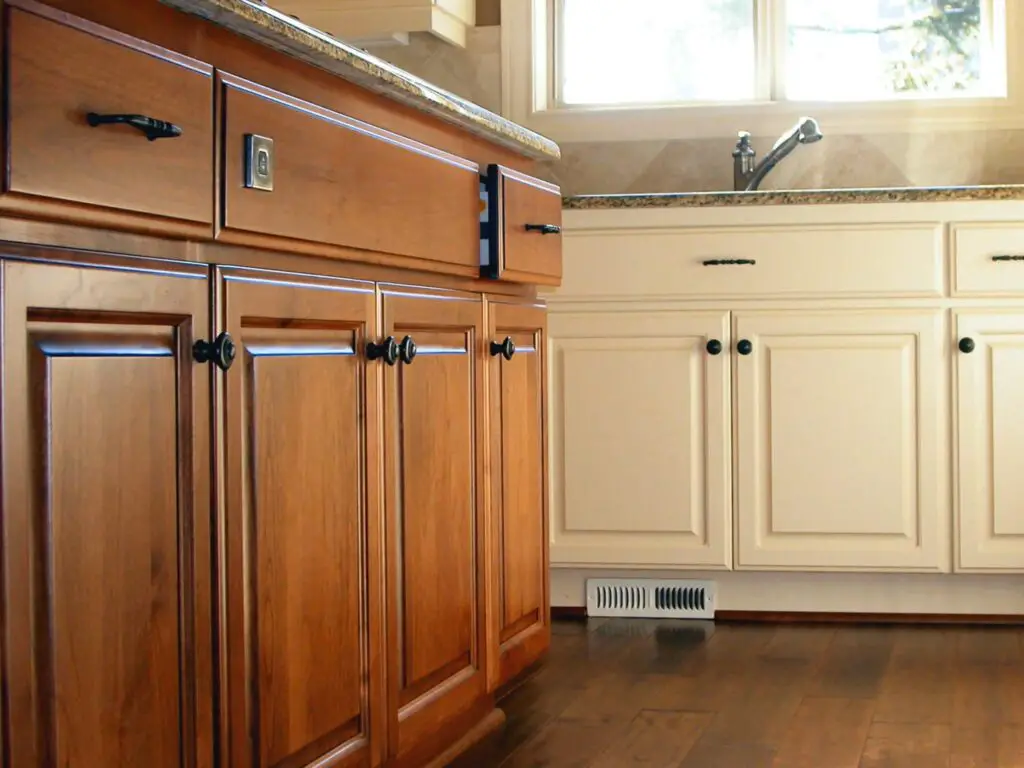
Conclusion
Through proper evaluation, preparation, and attention to detail, you have successfully brought out the natural beauty of the wood while adding your personal touch with the chosen stain color. The protective finish you applied ensures that your cabinets will withstand the rigors of daily use, keeping them looking exquisite for years to come. Moreover, this experience may have ignited your passion for other DIY home improvement projects, empowering you to explore new ways to enhance your living spaces creatively.
As you revel in the beauty of your newly stained kitchen stain cabinets, take a moment to appreciate the journey you’ve embarked on – from envisioning the outcome to mastering the techniques required for a flawless finish. Whether you undertook this endeavor as a budget-friendly upgrade or a meaningful transformation, the results are sure to impress family and friends who gather in your kitchen.
With your newfound skills and confidence, the possibilities for DIY projects in your home are limitless. So, as you bask in the fruits of your labor, remember that this is just the beginning of your creative journey, and there are plenty more opportunities to unleash your ingenuity and improve your living spaces.



